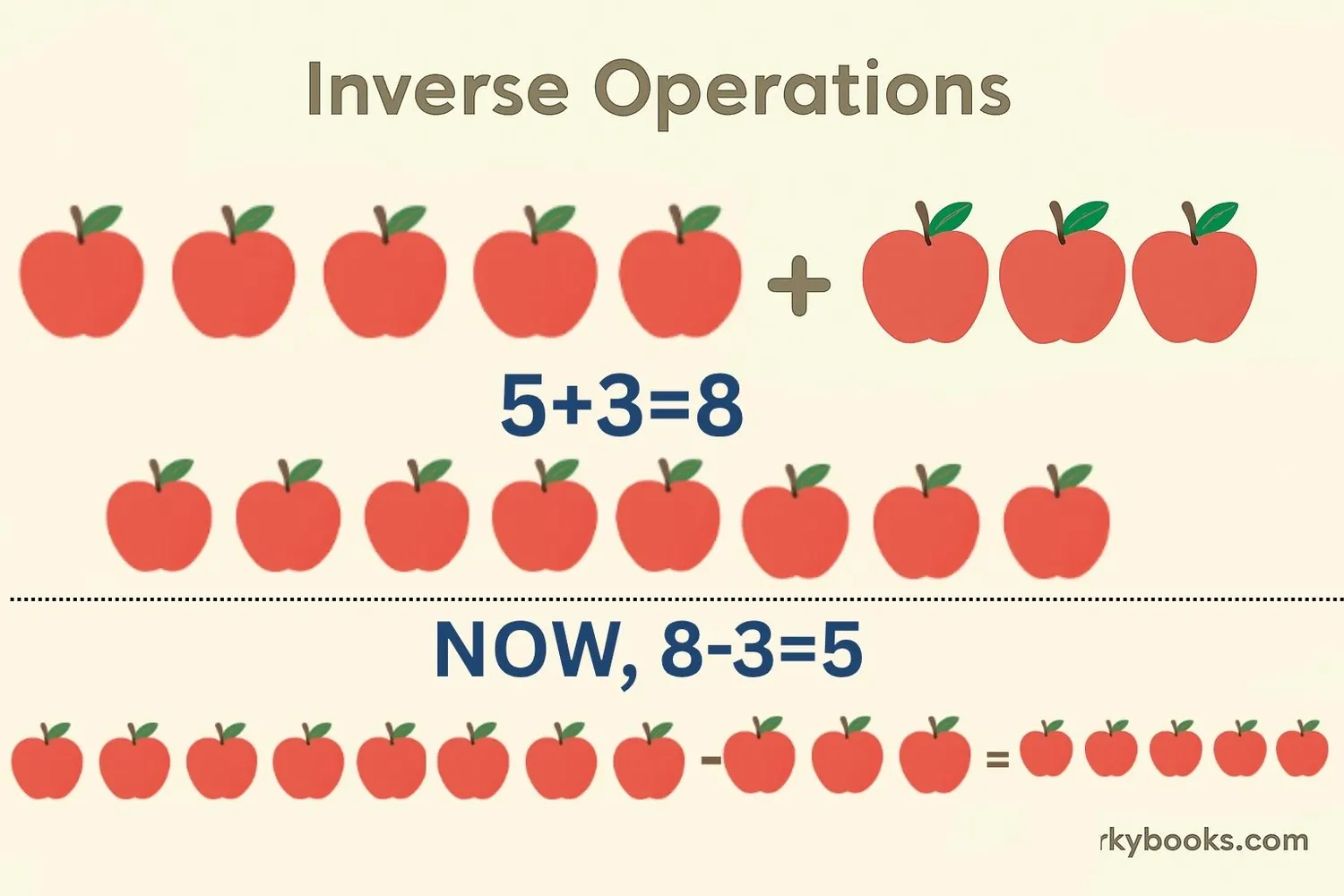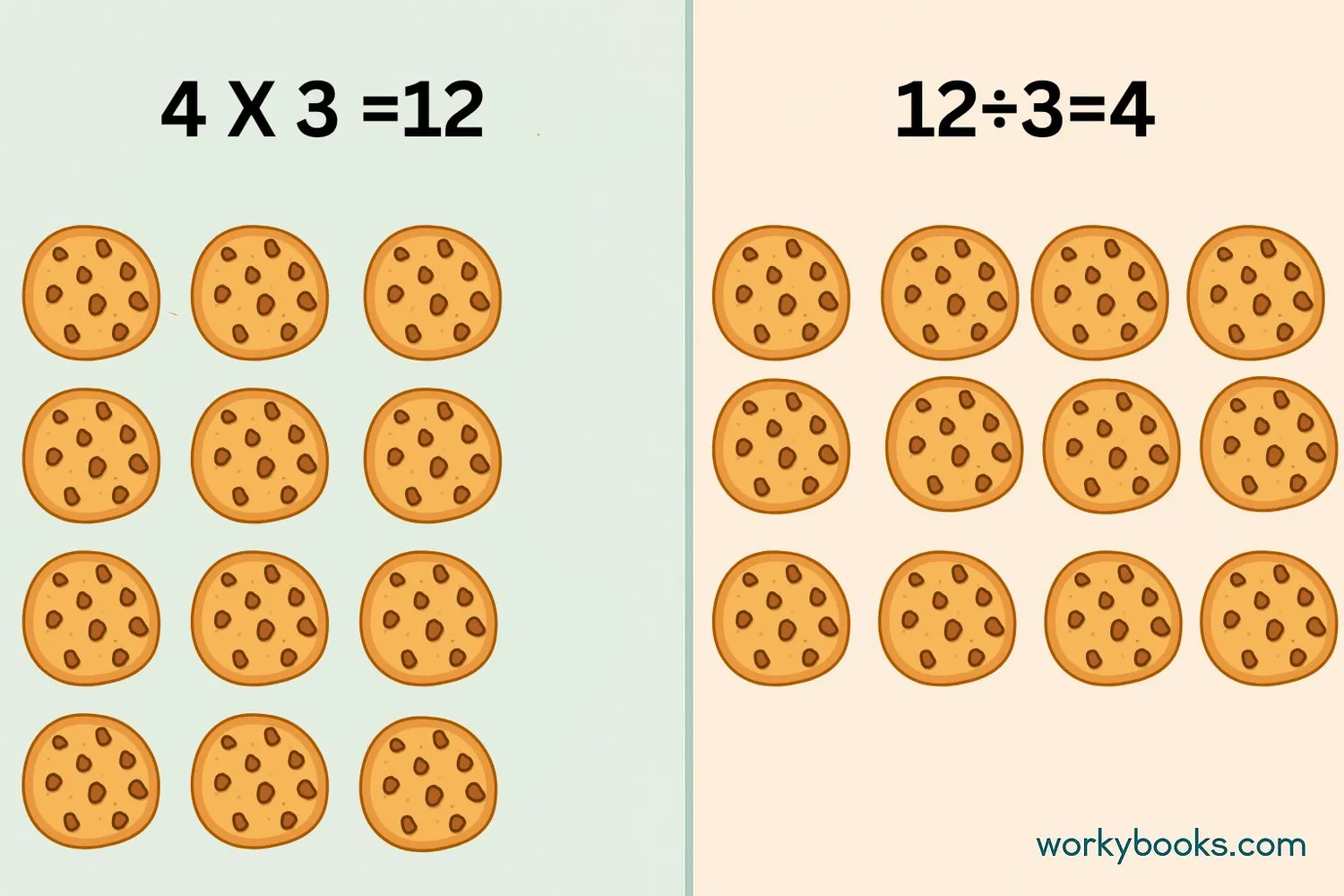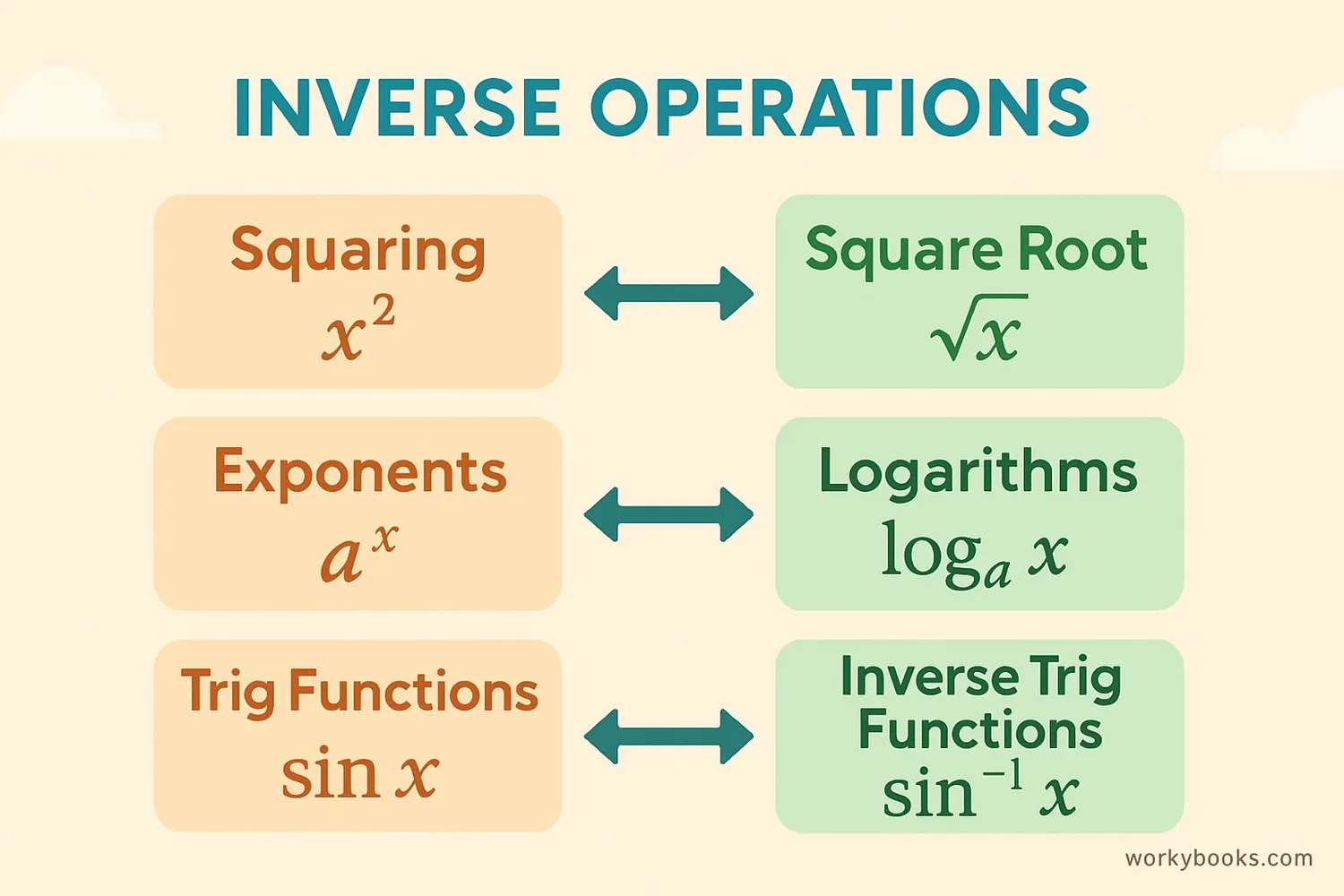Inverse Operations - Definition, Examples, Quiz, FAQ, Trivia
Learn how opposite mathematical operations undo each other with examples and practice activities
What Are Inverse Operations?

Inverse operations are mathematical operations that undo each other. They are like opposite actions that cancel each other out. Think of them as math's way of having a "do" and "undo" button.
The most common inverse operations pairs are:
- Addition and subtraction
- Multiplication and division
For example, if you add 5 to a number, subtracting 5 will bring you back to your original number. That's because addition and subtraction are inverse operations!
Understanding inverse operations helps us solve equations, check our work, and understand how different math operations relate to each other.
Key Concept
Inverse operations "undo" each other. If you perform one operation and then its inverse, you return to your starting number.
Addition and Subtraction

Addition and subtraction are inverse operations. This means:
Addition and Subtraction Relationship
If you add a number and then subtract the same number, you get back to where you started.
- 7 + 5 = 12 → 12 - 5 = 7
- 15 - 8 = 7 → 7 + 8 = 15
We can use this relationship to check our work. If we add two numbers, we can subtract one from the sum to make sure we get the other number back.
Remember
Subtraction is the inverse of addition, and addition is the inverse of subtraction.
Multiplication and Division

Multiplication and division are inverse operations just like addition and subtraction. This means:
Multiplication and Division Relationship
If you multiply by a number and then divide by the same number, you get back to your original number.
- 6 × 4 = 24 → 24 ÷ 4 = 6
- 20 ÷ 5 = 4 → 4 × 5 = 20
We can use this relationship to solve problems. If we know that 7 × 8 = 56, we also know that 56 ÷ 8 = 7. This helps us with division facts once we've learned multiplication.
Remember
Division is the inverse of multiplication, and multiplication is the inverse of division.
Other Inverse Operations

While addition/subtraction and multiplication/division are the most common inverse operations, there are others you'll learn as you advance in math:
Squaring and Square Roots
- Squaring (x²) and square roots (√) are inverses
- Example: 5² = 25 → √25 = 5
Exponents and Logarithms
- Exponents (bˣ) and logarithms (logb) are inverses
- Example: 10³ = 1000 → log10(1000) = 3
Trigonometric Functions
- Sine (sin) and arcsine (sin⁻¹) are inverses
- Cosine (cos) and arccosine (cos⁻¹) are inverses
- Tangent (tan) and arctangent (tan⁻¹) are inverses
As you learn more advanced math, you'll see how these inverse operations help solve complex problems. The principle is always the same - one operation undoes the other!
Advanced Concept
The additive inverse gives you zero when added to a number (like 5 and -5). The multiplicative inverse gives you one when multiplied (like 4 and 1/4).
Inverse Operations Quiz
Test your understanding of inverse operations with this 5-question quiz. Choose the correct answer for each question.
Frequently Asked Questions
Here are answers to common questions about inverse operations:
Math Trivia
Discover interesting facts about mathematics and inverse operations:
Ancient Math
The concept of inverse operations dates back to ancient Babylonian mathematics around 1800 BC, where they used reciprocal tables for division.
Calculator Logic
Calculators use inverse operations internally. When you press the "undo" button on a calculator, it's actually applying inverse operations to reverse your last calculation.
Square Root Symbol
The square root symbol (√) was first used in the 16th century. It comes from the letter "r" for "radix," which means root in Latin.
Zero Special
Zero is special for inverse operations. Adding zero doesn't change a number (identity), but multiplying by zero gives zero, which can't be inverted since division by zero is undefined.





